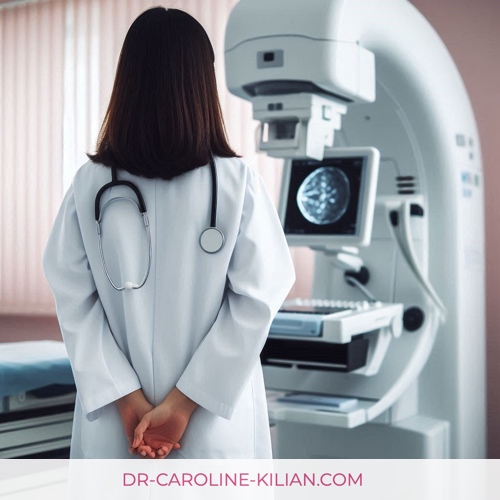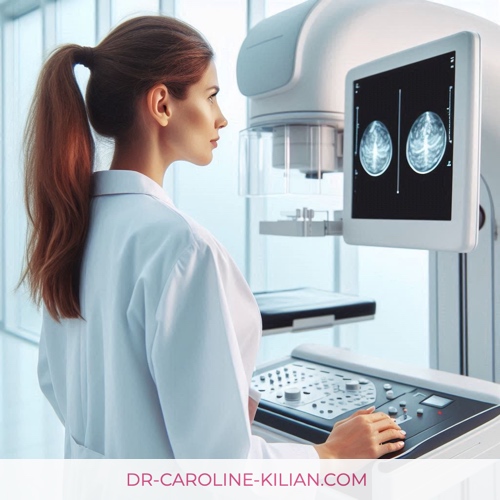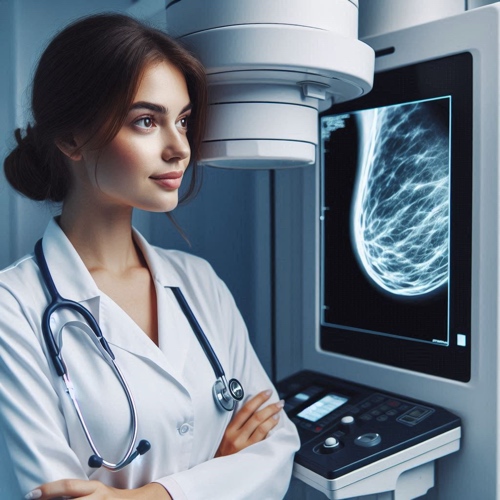Only Older Women Get Breast Cancer
The prevailing belief that breast cancer predominantly affects older individuals contributes to a dangerous complacency among younger populations. However, scientific research unequivocally demonstrates that this disease does not exclusively target post-menopausal women. Statistically, while the risk of developing breast cancer does increase with age, a notable percentage of cases are diagnosed in women under the age of 40. This crucial fact underscores the importance of regular screening and awareness among all age groups, fostering early detection strategies that can significantly improve prognosis and treatment outcomes.
Another aspect contributing to this misconception is the underrepresentation of younger women in breast cancer research studies, leading to a skewed public perception about the demographic profile of breast cancer patients. Efforts are being made to rectify this gap in research, emphasizing the relevance of risk factors beyond age, such as genetic predispositions, lifestyle factors, and environmental exposures. These comprehensive studies aim to provide a more nuanced understanding of breast cancer, advocating for a more inclusive approach to prevention and care.
| Age Group | Percentage of Breast Cancer Cases |
|---|---|
| Under 40 | Data varies |
| 40 and above | Higher percentage, increasing with age |
Educational campaigns and advocacy efforts play a pivotal role in dismantling the myth that breast cancer is an ailment only of the elderly. By disseminating information about cases involving younger individuals, these initiatives promote a culture of vigilance, encouraging women to prioritize their breast health regardless of age. This proactive approach is crucial in changing public attitudes and behaviors, making it clear that early and regular screening saves lives by detecting cancer at an early, more treatable stage.
In conclusion, the narrative that breast cancer is an affliction of the older population is both misleading and harmful. Given the considerable evidence pointing to the contrary, it is imperative that healthcare messages are reframed to reflect the reality that breast cancer can impact anyone at any age. This shift in perspective is vital in ensuring that all individuals, irrespective of age, are informed and empowered to take proactive steps in managing their breast health.
Men Don't Get Breast Cancer: a Dangerous Myth
The pervasive myth that breast cancer is a condition solely affecting women not only obscures the reality but also poses a profound public health risk. Statistically, while breast cancer is indeed more prevalent among women, the American Cancer Society reveals that approximately 1% of breast cancer cases occur in men. This amounts to several hundred men each year facing diagnoses, which, due to delayed recognition and screening, often results in detection at more advanced stages. The biological underpinning for breast cancer in men is fundamentally the same as in women—uncontrolled cell growth in breast tissue—underscoring that the mechanisms of disease do not discriminate by gender.

Delving deeper into the scientific nuances, it’s imperative to understand that both men and women possess a small amount of breast tissue located behind their nipples, which contains ducts. Though significantly smaller in volume compared to female breast tissue, this male breast tissue can undergo malignant transformations leading to cancer. Risk factors in men include genetic predispositions, such as mutations in the BRCA1 and BRCA2 genes, exposure to estrogen, a family history of breast cancer, radiation exposure, and a history of Klinefelter's syndrome, amongst others. These findings are critical in the consideration of risk assessments and challenge the gendered misconceptions surrounding the disease.
Efforts aimed at debunking this myth are paramount in ensuring that individuals, regardless of gender, remain vigilant for the signs of breast cancer and seek timely medical advice. Educational campaigns and research initiatives play a crucial role in dispelling misinformation, promoting gender-inclusive language when discussing breast health, and advocating for the inclusion of men in breast cancer studies. By fostering a broader understanding of breast cancer's impact on men, it is possible to alter the course of diagnosis, treatment, and survival rates for this overlooked demographic, ultimately contributing to more comprehensive care strategies and improved outcomes for all affected by breast and other disease.
Antiperspirants and Bras Cause Breast Cancer
The intertwining of daily habits and health has long been a subject of interest and concern, leading to the proliferation of myths about the causes of breast cancer. Among the most pervasive are the beliefs concerning the use of antiperspirants and the wearing of bras. Scientific studies, however, have not found a direct link between these items and an increased risk of developing this disease. The confusion often stems from misunderstandings about how cancer starts and spreads. Breast cancer begins in the tissue of the breast as a result of mutations in the DNA of breast cells. These mutations are primarily influenced by genetic factors, lifestyle, and certain environmental exposures, not by the topical application of products or the pressure exerted by clothing.
Diving deeper, the myth surrounding antiperspirants suggests that they contain harmful substances which can be absorbed through the skin or enter the body through nicks caused by shaving. Critics posit that these substances then interfere with hormonal functions and promote the growth of cancer cells. Yet, thorough reviews by regulatory bodies such as the Food and Drug Administration (FDA) and cancer research organizations have found no compelling evidence to support these claims. Conversely, concerning bras, it is hypothesized that tight-fitting garments restrict lymph flow, causing toxins to accumulate and increase cancer risk. This theory, too, lacks scientific backing, with studies finding no significant association between bra wearing and breast cancer risk, irrespective of factors like wearing them for prolonged periods or the tightness of the bra.
In conclusion, while the exact causes of breast cancer remain under investigation, current research does not support the notion that antiperspirants or bras play a role in its development. It is crucial for public health messaging to focus on evidence-based factors, such as genetics, diet, and lifestyle choices, while encouraging regular screenings and awareness of the more established risk factors. Dispelling myths serves not only to allay unwarranted fears but also to direct attention towards actionable measures individuals can take to mitigate their risk.
A Lump Is Always the First Sign
The pervasive belief that the emergence of a lump in the breast unequivocally heralds the onset of breast cancer oversimplifies the complexity and variety of symptoms associated with this multifaceted disease. While a palpable lump may indeed serve as a critical indicator, it is essential to recognize that breast cancer can manifest through a spectrum of less conspicuous signs. These may include, but are not limited to, skin changes on the breast, such as dimpling, puckering, or redness, alterations in the nipple such as retraction or discharge not associated with lactation, and persistent breast pain that does not follow cyclical patterns related to menstruation.
In elucidating the diagnostic landscape of breast cancer, it is imperative to highlight the importance of comprehensive screening methods beyond self-examination. Medical professionals advocate for regular mammography screenings, which can detect tumors that are too small to be felt. Additionally, breast ultrasounds and magnetic resonance imaging (MRI) play pivotal roles in providing a more detailed assessment, particularly in individuals with dense breast tissue where mammograms might be less effective. These advanced imaging techniques are instrumental in uncovering malignancies that elude physical detection, thereby challenging the misconception that a noticeable lump is a prerequisite for diagnosis.

The emphasis on the solitary symptom of a palpable lump may inadvertently lead to a delayed pursuit of medical consultation and diagnosis, undermining the potential for early detection and treatment. Acknowledging the diversity of breast cancer symptoms encourages a more vigilant and proactive approach to personal health, prompting individuals to seek professional evaluation in the presence of any unusual changes, irrespective of their similarity to the common narrative of a discoverable lump. This broadened awareness is crucial in demystifying breast cancer, empowering individuals to act swiftly and decisively at the earliest suspicion of an anomaly.
At the confluence of medical science and public health education lies the potential to dismantle entrenched myths about breast cancer, substituting them with a foundation of factual knowledge and understanding. By embracing a nuanced perspective on the symptoms and diagnostic processes associated with breast cancer, society can move toward a more informed and effective stance against this prevalent condition, reducing preventable morbidity and mortality through the power of awareness and early intervention.
Family History Guarantees You'll Get Breast Cancer
Understanding the role of genetic predisposition in the onset of breast cancer is pivotal to debunking the widespread misconception that a family history of this condition is tantamount to a predetermined fate. It is essential to recognize that while a familial history can elevate one's risk, it does not guarantee the development of the disease. Statistically, only about 5% to 10% of breast cancer cases are thought to be hereditary, primarily caused by mutations in the BRCA1 and BRCA2 genes. These mutations significantly increase the risk, yet they are not the sole predictors of breast cancer.
The narrative that a family history seals one's fate overlooks the complexity of breast cancer etiology, which involves an interplay of genetic, environmental, and lifestyle factors. Risk assessment tools, incorporating factors such as age, reproductive history, and known genetic mutations, help in stratifying individuals according to their risk, facilitating targeted screening and preventive measures. It's a nuanced reality that although individuals with a family history are at a higher risk, many women with such backgrounds might never develop breast cancer, underscoring the importance of personalized risk assessment and surveillance strategies.
In the context of prevention and control, the discourse must shift towards empowering individuals with accurate information about breast cancer risks and the importance of early detection. Highlighting the roles of regular screenings, such as mammography, and advocating for a lifestyle that promotes overall health are key steps in reducing risk and enhancing outcomes for those with a family history of breast cancer. Through education and debunking myths, we can foster a more informed understanding of breast cancer, emphasizing that while genetics play a role, they do not dictate an unchangeable outcome.
| Myth/Fact | Explanation |
|---|---|
| Having a family history means you will definitely get breast cancer | This is a myth. While a family history can increase your risk, it does not guarantee that you will develop breast cancer. Lifestyle, environmental factors, and other genetic components also play significant roles. |
Mastectomy Is the Only Effective Treatment Option
The notion that a mastectomy represents the sole avenue for breast cancer treatment is a misconception that oversimplifies the nuanced approach necessary for managing this complex disease. Modern medicine has made significant strides in offering a spectrum of treatments tailored to individual cases, considering factors like the cancer's stage, biology, and the patient's overall health. Lumpectomy combined with radiation therapy, for instance, is a breast-conserving treatment that has been shown to be as effective as mastectomy for many patients. Furthermore, systemic therapies such as chemotherapy, hormone therapy, and targeted therapy play a crucial role in treating breast cancer, especially in its advanced stages or when there is a high risk of recurrence. These treatments can be used to shrink tumors before surgery, reduce the risk of cancer returning, or manage the disease in patients for whom surgery is not an option.
Advancements in medical science have also paved the way for precision medicine in breast cancer treatment, focusing on the genetic makeup of the tumor. This approach allows for targeted therapies that are more effective and often have fewer side effects than traditional treatments. For example, HER2-positive breast cancers, which were once considered very aggressive and difficult to treat, now have several targeted therapy options that significantly improve outcomes. Additionally, ongoing research and clinical trials continue to expand the arsenal of treatments available, offering hope and new possibilities for patients every year.
It is essential for individuals diagnosed with breast cancer to engage in thorough discussions with their healthcare teams to understand the breadth of their treatment options. Each patient's journey is unique, and decisions about treatment should be made based on a comprehensive evaluation of the benefits and risks of each option. Empowered with accurate information, patients can actively participate in their care, choosing the path that is best aligned with their personal values and health goals. This collaborative and informed approach challenges the outdated belief that mastectomy is the only effective treatment, encouraging a more personalized and considerate strategy in the battle against breast cancer.







